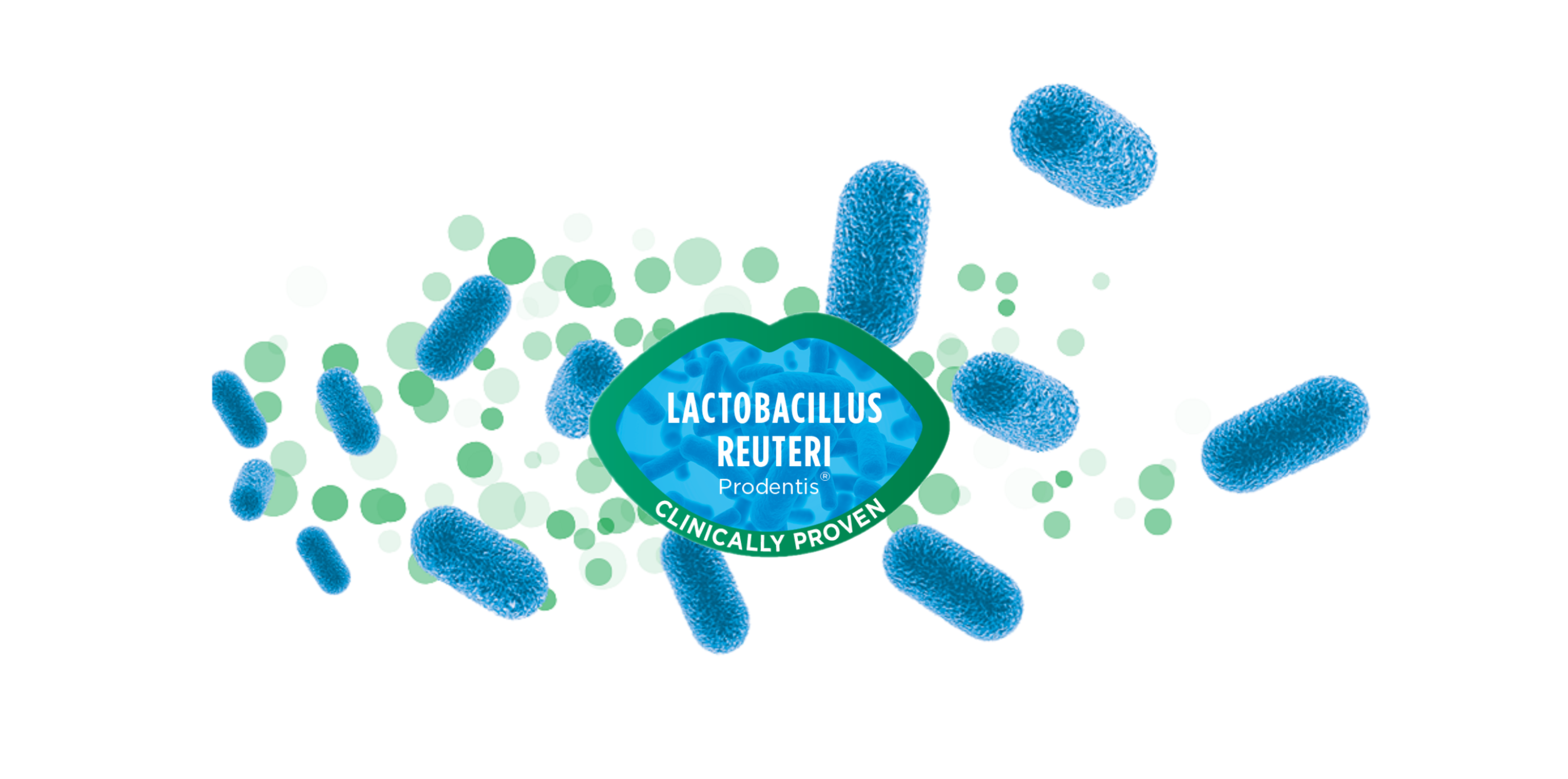
The Relationship Between the Gut and Oral Microbiomes and Their Impact on Overall Health
The microbiome and the entire microbiome culture are an emerging area of importance in medical health and wellness. A microbiome per se is a complex ecosystem composed of countless microorganisms which reside within and around human bodies, interacting with nearly all bodily systems.

Common knowledge emphasizes the role of the gut microbiome in digestion, metabolism, and immune-related functions; however, its relationship to the oral microbiome is equally noteworthy yet not well understood. The two microbial communities are distinct and spatially separated.
Nevertheless, they are closely linked and fundamental to maintaining overall health.
Comprehension of the delicate mechanisms that lie underneath the microbiome is fundamental to gaining a thorough perspective on general well-being.


The Microbiome
The term microbiome encompasses the microbes, their genetic information and the environment in which they interact. It has been hypothesized that the Nobel Prize laureate Joshua Lederberg coined the term microbiome (Hooper & Gordon, 2001), representing the total genome of symbiotic communities that are host-associated.
The microbiome is considered “the biotic and abiotic habitat comprising the community of microorganisms associated with a particular environment or host. Sometimes synonymized with “microbiota”, though it has been argued the latter should be reserved for marker-gene-based descriptions of the biotic component of the microbiome” (Marchesi & Ravel, 2015).
Recent studies have identified, within the human gut microbiome, between 90,000 and 150,000 distinct microbial strains in two large meta-analyses (Almeida et al., 2019; Pasolli et al., 2019). It is estimated that each individual has between 150 and 400 resident bacterial species in the intestinal tract (Mall et al., 2017). These data were obtained through both culture-dependent and culture-independent techniques (Lloyd-Price et al., 2016).
This mutual interaction between the microbial and human genes of so many microbial species highly affects health and physiology:
The concept of a ‘balanced gut microbiome,’ or eubiosis, is essential for gut health. This is constituted by a significant colonisation of the bacterial phyla Firmicutes and Bacteroides, while potentially harmful species, such as the Proteobacteria phylum (including Enterobacteriaceae), are scarce.
When the latter become more relevant, dysbiosis takes place. Dysbiosis has been correlated to a wide range of conditions, including inflammatory bowel diseases, metabolic disorders, and obesity. Understanding the dynamic interaction between eubiosis and dysbiosis is of utmost importance for therapeutic interventions to correct microbial imbalance.
It has been shown that the most prevalent and dominant phyla, which constitute almost 90% of the total microbiota population, are: Bacteroidetes, Firmicutes, Proteobacteria, Fusobacteria, Tenericutes, Actinobacteria, and Verrucomicrobia (Jethwani & Grover, 2019).
Explore an insightful discussion on the oral microbiome and its crucial role in preventing periodontal diseases and improving oral health. In this episode, Professor Zaura shares invaluable insights into microbial communities and their profound impact on overall health.
Dive deep into expert strategies on how to improve the oral microbiome and improve patient care.
Development of the gut microbiome
The initial bacterial colonisation of the microbiome begins during birthing (Salazar et al., 2014). The delivery method greatly influences the infant gut microbiota’s composition. In the event of a vaginal delivery, the newborn acquires the mother’s vaginal microbiota, while in the caesarean section the infant's skin is mostly populated by the maternal skin microbiota, thus a diverging microbial composition occurs (Clemente et al., 2012). Subsequently, gut colonisation is greatly affected by environmental and dietary factors.
The first pattern of gut colonisation is thought to be chaotic, and there is an increasing amount of evidence that suggests that early environmental exposures, especially through the diet, are very important in causing these variations (Koening et al., 2011). In the early stages, aerobic bacteria, such as Enterococci, Staphylococci, and Streptococci begin to colonise the intestinal tract, creating the environment to which a more anaerobic microbial community can adhere (Pop, 2012).
Thus, the development of the infant gut microbiome and immune system will be heavily influenced by weaning, breastfeeding, and the gradual introduction of different foods (Schwartz et al., 2012).
Feeding
Breast milk is not sterile, but accommodates up to 600 species of bacteria, among which some beneficial species such as Bifidobacterium breve, Bifidobacterium adolescentis, Bifidobacterium longum, and Bifidobacterium bifidum can be found. These microorganisms are responsible for the formation of a healthy gut microbiota in the infant and the rise of an adequate immune system (Martín et al., 2009). Importantly, breastfed babies show a higher number of bifidobacteria than formula-fed infants. Indeed, one of the advantages of breastfeeding over formula feeding is the presence of oligosaccharides. These oligosaccharides are prebiotics that are conducive to a positive bacterial community, triggering protective white blood cells in the gut (Balmer & Wharton, 1989).
Bifidobacteria inhibit the colonisation of pathogenic bacteria and contribute to the general health of the gut (Fukuda et al., 2011).
Bifidobacteria are responsible for the strengthening of the gut mucosal lining mostly by disallowing the pathogenic microorganisms to colonise, promoting immune responses and competing nutritionally with pathological bacterial species. Moreover, the presence of Bifidobacteria significantly increases the level of immunoglobulin A, which prevents adhesions of pathogens to the intestinal wall, leading to an enhancement of the intestinal immune system (Ouwehand et al., 2002).
Changes in the gut microbiome with age
The composition of the intestinal microbiota undergoes significant changes during the early stages of development as seen through metagenomic analyses. Various factors influence these changes, among which diet plays an important and significant role (Koenig et al., 2011). Even in newborns, the effect of diet on the intestinal microbiome can be observed. During the early stages, the microbiome shows minimal diversity, and diet provides nutrients that increasingly support microbiome diversity, helping to develop specific microbial populations needed for lactate metabolism (Salazar et al., 2014).
Within the first 3 years of life, bacterial intestinal flora fully develops. After the preliminary colonisation of Bifidobacterium species, a more diverse community populated with Bacteroides and Firmicutes will occur (Ottman et al., 2012). This composition will prevail during life unless long dietary fluctuations or antibiotic usage occur.
Indeed, in old age, there is often an increase in variability regarding the microbial community (Claesson et al., 2011). The process of ageing is associated with a plethora of factors that may potentially alter the gut microbiota, including tooth loss, changes in salivary secretion, slower digestion, and changes in the timing of food transit in the intestine (Lovat, 1996). Thus, an increase in fibre is most advised during ageing.
Diet
Diet is one of the primary factors regulating the intestinal microbiota, and dietary modifications cause drastic changes in overall health. A Western diet, rich in fat, processed sugar, and lactose-free protein derived from meat, and limited in fibres, is suspected to be one of the key factors reducing bacterial diversity and decreasing beneficial species other than Bifidobacterium and Eubacterium (Drasar et al., 1973; Reddy et al., 1975; Wu et al., 2011). Therefore, the Mediterranean diet, vegan, and vegetarian diets have been suggested as more appropriate for developing a healthy composition of the gut microbiome. The Mediterranean diet increases the presence of Lactobacillus, Bifidobacterium, and Prevotella. Moreover, it decreases the risk of pathogenic bacteria such as Clostridium (Bialonska et al., 2010; Clemente et al., 2012; Fava et al., 2013; Furet et al., 2010; Koloverou et al., 2016; Queipo-Ortuño et al., 2012). A vegetarian diet is characterised by a higher consumption of dietary fibre, which is crucial for maintaining the integrity of the intestinal mucosal barrier function. This diet is associated with improved health and changes in the composition of the intestinal microbiota, leading to a predominance of Prevotella and Bacteroidetes while shifting away from Firmicutes (Matijašić et al., 2014).
The microbiome and metabolic health: Connections to obesity, cardiovascular disease and diabetes
The complex interactions between the intestinal microbiota and the host have been shown to contribute to metabolic disorders such as obesity and diabetes. Studies have shown an association between obesity and lower levels of Bacteroidetes (Ley et al., 2005; Turnbaugh et al., 2006). The level of Bacteroidetes increases again after weight loss through a low-fat and carbohydrate diet (Ley et al., 2006). Subjects with diabetes have a reduced number of butyrate-producing bacteria (Karlsson et al., 2013; Larsen et al., 2010; Yassour et al., 2016; Zhang et al., 2013). Butyrate is responsible for the maintenance of the intestinal barrier, the decrease of the systemic inflammatory response, and the regulation of insulin sensitivity. Besides metabolic disorders such as obesity, the microbiome's effects also play a role in cardiovascular health, mainly via the production of microbial metabolites like TMAO (trimethylamine N-oxide). TMAO is a metabolite derived from the intestinal microbiota. When its concentration exceeds normal levels, it becomes a significant factor in cardiometabolic risk (Qi et al., 2018), showing a 12% increased risk of developing hypertension (Ge at al., 2020) and a 62% greater risk of experiencing a cardiovascular event (Heianza et al., 2017).
Probiotics
The Food and Agriculture Organization (FAO) of the United Nations and the World Health Organization (WHO) define probiotics as "live microorganisms that, when administered in adequate amounts, confer a health benefit to the host." Probiotics are commonly used to improve the homeostasis of the intestinal microbiota, with the goal of maintaining human gut health (Sanders et al., 2011). Since intestinal microbial communities are not permanent and can be altered by various factors such as lifestyle, diet, and antibiotics, probiotics can be used to treat and prevent a variety of intestinal disorders. The beneficial effects of probiotics and their relationship with intestinal diseases have been demonstrated in a variety of studies (Blaabjerg et al., 2017; Hilty et al., 2010; Yang & Yu, 2018).
The oral-gut axis: Interactions between intestinal and oral microbiota
The oral microbiome is composed of a highly diverse community of bacteria, fungi, archaea, and viruses, playing a crucial and significant role in maintaining both oral and systemic health. Under conditions of exposure to risk factors such as poor oral hygiene, smoking, and diabetes, dysbiosis of this microbiome can lead to periodontal diseases and caries. Literature indicates that oral microbiome dysbiosis affects the composition of the gut microbiome, increasing the likelihood of systemic and intestinal inflammation as well as metabolic disturbances. This interaction highlights the importance of maintaining the balance of the oral microbiome to reduce health risks on a broader scale.
The oral microbiome contains more than 770 bacterial species, primarily belonging to Actinomycetota, Bacteroidota (Bacteroidetes), Bacillota (Firmicutes), Fusobacteriota (Fusobacteria), Pseudomonadota (Proteobacteria), Saccharibacteria (TM7), and Spirochaetota (Spirochaetes), constituting one of the richest and most diverse microbial communities in the human body (Escapa et al., 2018). In addition, the oral microbiome does not only contain bacteria; the presence of microeukaryotes (fungi, amoebae, and flagellates), archaea, and viruses is also significant as there are over 100 genera of fungi in the oral microbiome (Diaz et al., 2017; Diaz & Dongari-Bagtzoglou, 2021; Ghannoum et al., 2010), predominantly represented by species of Candida and Malassezia (Dupuy et al., 2014; Gabaldón et al., 2013; Hong et al., 2020).
Interestingly, the oral cavity contains numerous microenvironments that host diverse microbial communities. These microbial communities have evolved to occupy these specific niches. For example, genera such as Fusobacterium, Veillonella, and Prevotellaceae include different species capable of colonising distinct microenvironments within the oral cavity, such as the tongue, gingiva, or dental plaque (Eren et al., 2014; Mark Welch at al., 2019).
The importance of the oral microbiota cannot be stressed enough, as two of the most common diseases globally, caries and periodontitis, are due to its dysbiosis. In the development of caries, a significant role is played by S. mutans, a species capable of biofilm formation and acid production. However, Lactobacilli, Veillonella, and C. albicans also play significant roles in the pathogenesis of caries (Simón-Soro & Mira, 2015). In the development of periodontitis, the necessary condition for the onset of the pathology is the accumulation of bacterial plaque in the form of a biofilm at the gingival margin (Mombelli, 2003). Recent studies have shown that, in addition to the bacterial taxa traditionally associated with periodontal disease (Porphyromonas, Treponema, and Tannerella species), Filifactor alocis, Peptoanaerobacter stomatis, and Saccharibacteria are potential periodontal pathogens (Miralda & Uriarte, 2021). In case of dysbiosis in the oral cavity due to risk factors such as smoking, diabetes, poor and incorrect oral hygiene, or an unhealthy diet, the level of periodontopathogenic bacteria significantly increases, leading to a reactive inflammatory process of the periodontal tissues (Scannapieco & Dongari-Bagtzoglou, 2021). Moreover, it has been shown that periodontal disease also increases the likelihood of developing numerous and significant systemic conditions such as atherosclerotic diseases, autoimmune disorders, tumours, and diabetes (Hajishengallis, 2022).
The oral and the gut microbiota are not separate entities. The oral cavity and the intestinal tract share similarities in many aspects such as microbial composition, anatomical mucosal structure, and immunological defences. These shared features indicate that intestinal diseases and oral pathologies might be interconnected. Indeed, several studies have found that oral bacteria can colonise the intestinal tract and thus become an integral component of the gut microbiota (Lwauchi et al., 2019; Kageyama et al., 2017; Schmidt et al., 2019). This gut-gum axis appears to be connected through saliva, haematogenous and enteral routes.
Accordingly, saliva transports enzymes, cytokines, inflammatory cells, and bacteria. The presence of salivary mucus protects these components from gastric acid, allowing them to reach the intestinal tract . Moreover, bacteria may reach the intestinal walls through haematogenous dissemination. It is well known that oral mechanical injuries from routine activities such as intense chewing or brushing, as well as dental procedures such as dental cleaning, may enhance the chance of oral bacteria entering the systemic circulation, particularly in subjects affected by periodontal disease (Lockhart et al., 2008; Parahitiyawa et al., 2009).
The dissemination of oral microbes to the gut may aggravate various gastrointestinal diseases such as irritable bowel syndrome, inflammatory bowel disease, and colorectal cancer. A study on inflammatory bowel disease observed that colonic biopsies showed the presence of Fusobacterium, Peptostreptococcus, Staphylococcus, and Streptococcus, common inhabitants of the oral microbiota (Dinakaran et al., 2019). In fact, patients with severe periodontitis exhibit dysbiosis in their gut microbiota (Amado et al., 2020; Kawamoto et al., 2021).
Moreover, patients with Crohn's disease and ulcerative colitis showed more similarities between the oral and gut microbiome compared to healthy individuals. This further suggests an association between periodontal disease and inflammatory bowel disease. The intestinal colonisation of the pathogenic oral bacterium Haemophilus parainfluenzae in periodontitis is linked to intestinal inflammation in patients with Crohn's disease. Therefore, individuals with early-onset forms of periodontitis may experience more severe symptoms of Crohn's disease (Imai et al., 2021); Sohn et al., 2023).
It has also been hypothesised that gut microbiota dysbiosis influences the development of periodontal disease, given that inflammatory bowel disease is a risk factor for periodontal disease (Chandan & Thomas, 2017). This may be based on the fact that gut microbiota dysbiosis alters the function of the intestinal barrier, disrupting the immune system and leading to increased levels of systemic inflammation and, therefore, affecting glucose and lipid metabolism. It might increase the likelihood of developing various systemic diseases (Jepsen et al., 2018).
Finally, it is worth mentioning that after periodontal treatment, the composition of both oral and intestinal microbiota in periodontal patients closely resembled that of periodontally healthy patients (Baima et al., 2024).


